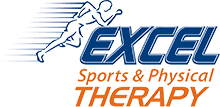What are trigger points? Even if you have not heard of them before, there’s a chance that you’ve experienced the pain and discomfort that trigger points can cause. A trigger point is an area of muscle, usually in the shoulder or the upper back, that has formed itself into a stiff, tight knot. You can usually locate a trigger point by feeling for it through the skin. Most experts agree that stress, repetitive movements and poor posture can all contribute to the formation of trigger points.
Pain, swelling and stiffness are all symptoms caused by trigger points in the muscles. If left untreated, sometimes the symptoms can grow worse and lead to further injury. That is why it is important to seek out trigger point therapy as soon as possible.
What is trigger point therapy?
Trigger point therapy is performed by licensed physical therapy specialists. It is designed to both treat current trigger points and prevent new trigger points from forming. If you’ve never considered physical therapy to treat your painful trigger points, here are four things that you might want to know about trigger point therapy:
- No medication needed — Physical therapists can treat trigger points without the need for pain medications or the use of any topical substances during therapy. In fact, most experts agree that pain medication is not an effective treatment for the pain caused by trigger points.
- Manual therapy techniques — The most common method that physical therapists use to treat trigger points is manual therapy. This involves manipulating and applying pressure to the soft tissue. This can be done using the therapist’s hands, or with special instruments.
- Dry needling techniques — Dry needling is another method that is used in trigger point therapy. A therapist inserts a micro-thin needle directly into the muscle. This encourages the knotted muscle fibers to spasm and release, allowing trigger points to relax.
- Posture training — Poor posture, along with stress and the overuse of certain muscles, are the main contributors to trigger points forming. A physical therapist can instruct you on ways that you can move your body that will help prevent new trigger points from forming.
Can Excel Sports & Physical Therapy treat my trigger points?
If you are struggling with acute or chronic pain, contact Excel Sports & Physical Therapy today to learn more about trigger point therapy as well as our other drug-free and noninvasive techniques. We’re happy to connect you with a physical therapist who can help you start feeling better as soon as possible.
Contact our team today for more information or to schedule an initial appointment.

